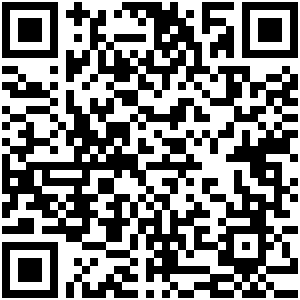 Before a Power Outage
Before a Power Outage
- Build an emergency kit and make a family communications plan.
- Follow energy conservation measures to keep the use of electricity as low as possible, which can help power companies avoid imposing rolling blackouts.
- Fill plastic containers with water and place them in the refrigerator and freezer if there's room. Leave about an inch of space inside each one, because water expands as it freezes. This chilled or frozen water will help keep food cold during a temporary power outage.
- Be aware that most medication that requires refrigeration can be kept in a closed refrigerator for several hours without a problem. If unsure, check with your physician or pharmacist.
- Keep your car tank at least half full because gas stations rely on electricity to power their pumps.
- Know where the manual release lever of your electric garage door opener is located and how to operate it. Garage doors can be heavy, so know that you may need help to lift it.
- Keep a key to your house with you if you regularly use the garage as the primary means of entering your home, in case the garage door will not open.
Be Prepared For Power Outages
From AZEIN Arizona Emergency Information Network
Short-term power outages and blackouts are inconvenient. In some cases these outages can be life threatening.
The biggest blackout in U.S. history occurred on Aug. 14, 2003, leaving roughly 50 million people without power. But by preparing for outages in advance, you'll have a plan to use when the power goes out.
10 Pre-Blackout Tips
People with Disabilities and Other Access and Functional Needs
- Call your power company before rolling blackouts occur if you use a battery-operated wheelchair, life-support system or other power-dependent equipment. Many utility companies keep a list and map of the locations of power-dependent customers in case of an emergency. Ask them what alternatives are available in your area. Contact the customer service department of your local utility company(ies) to learn if this service is available in your community.
- Have an extra battery if you use a motorized wheelchair or scooter. A car battery also can be used with a wheelchair but will not last as long as a wheelchair's deep-cycle battery. If available, have a lightweight manual wheelchair for backup.
- Have a talking or Braille clock or large-print timepiece with extra batteries if you are blind or have a visual disability.
- Consider getting a small portable battery-operated television set if you are deaf or have a hearing loss. Emergency broadcasts may give information in American Sign Language (ASL) or open captioning.
Conserve Power and Help to Avoid a Blackout.
- Set your thermostat at 68 degrees or lower in winter and at 78 degrees or higher in summer. (A 75-degree setting uses 18 percent more electricity and a 72-degree setting uses 39 percent more electricity. A 78 degree setting allows for sufficient cooling while still conserving electric power.)
- Install a programmable thermostat so that you can have your furnace or air conditioning run only when you are at home.
- Use an air conditioner only when you are home. If you want to cool down a room before you arrive home, set a timer to have it switch on no more than one-half hour before you arrive home.
- Use appliances with heavy electrical loads (e.g., dishwashers, washers, dryers) early in the morning or late at night.
- Do not set the thermostat at a colder-than-normal setting when you turn on your air conditioner. It won't cool your home any faster and could result in unnecessary energy expenditure and expense.
- Open draperies and shades on south-facing windows during the day in the winter to allow warm sunlight to enter your home. Close them at night to reduce the chill. Keep window coverings closed during the day in summer.
- Clean or replace furnace and air-conditioner filters regularly. Dirty filters restrict airflow and increase energy use.
- Clean warm-air registers, baseboard heaters, and radiators as needed; make sure they're not blocked by furniture, carpeting, or drapes.
- Turn off lights, appliances and computers when not in use. Avoid using a "screen saver" on your computer monitor. Simply turn off the monitor when you won't be using the computer for a while. Set computers, monitors, printers, and copiers to their energy saving feature and turn them off in the evening. It's no longer true that computer equipment is damaged by turning it off and on.
- Close windows when the heating or cooling system is on.
- Caulk windows and doors to keep air from leaking, and replace old windows with new, energy-efficient windows.
- Purchase energy-efficient appliances and lights. Look for the ENERGY STAR® labels. ENERGY STAR® is a program of the U.S. Department of Energy (DOE) and the Environmental Protection Agency (EPA) designed to help consumers identify energy-efficient appliances and products.
- Minimize "leaking energy." Many TVs, VCRs, chargers, computer peripherals and other appliances use electricity even when switched "off." If possible, unplug electronic devices and chargers that have a block-shaped transformer on the plug when not in use.
- Plug and seal the chimney flue if you never use your fireplace.
- Keep your fireplace damper closed unless a fire is going. Keeping the damper open is like keeping a 48-inch window open during the winter—it allows warm air to go right up the chimney.
- Wrap the water heater with an insulation jacket, available at most building supplies retailers.
- Wash only full loads of clothes and clean the dryer's lint trap after each use. Use the cold water setting on your clothes washer when you can. Using cold water reduces your washer's energy use by 75 percent.
- Wash full loads of dishes in the dishwasher and use the "lite" cycle. If possible, use the "rinse only" cycle and turn off the "high temperature" rinse option. When the regular wash cycle is done, open the dishwasher door to allow the dishes to air dry.
- Replace incandescent light bulbs with energy-efficient compact fluorescent lights.
- Use one large light bulb rather than several smaller ones.
During a Power Outage
- Use only flashlights for emergency lighting. NEVER use candles during a blackout or power outage due to extreme risk of fire.
- Keep refrigerator and freezer doors closed to keep your food as fresh as possible. If you must eat food that was refrigerated or frozen, check it carefully for signs of spoilage.
- Turn off or disconnect appliances, equipment (like air conditioners) or electronics in use when the power went out. Power may return with momentary "surges” or “spikes” that can damage computers as well as motors in appliances like the air conditioner, refrigerator, washer or furnace.
- Do not run a generator inside a home or garage.
- Do not connect a generator to a home's electrical system. If you use a generator, connect the equipment you want to run directly to the outlets on the generator.
- Listen to local radio and to a battery- or generator-powered television for updated information.
- Leave on one light so that you'll know when your power returns.
- Use a standard telephone handset, cellular phone, radio or pager if your phone requires electricity to work, as do cordless phones and answering machines. Use the phone for emergencies only. Listen to a portable radio for the latest information.
- Do not call 9-1-1 for information—call only to report a life-threatening emergency. Use the phone for life-threatening emergencies only.
- Take steps to remain cool if it is hot outside. In intense heat when the power may be off for a long time, consider going to a movie theater, shopping mall or “cooling shelter” that may be open in your community. If you remain at home, move to the lowest level of your home, since cool air falls. Wear lightweight, light-colored clothing. Drink plenty of water, even if you do not feel thirsty.
- Put on layers of warm clothing if it is cold outside. Never burn charcoal for heating or cooking indoors. Never use your oven as a source of heat. If the power may be out for a prolonged period, plan to go to another location (the home of a relative or friend, or a public facility) that has heat to keep warm.
- Provide plenty of fresh, cool water for your pets.
- Eliminate unnecessary travel, especially by car. Traffic signals will stop working during an outage, creating traffic congestion.
- Remember that equipment such as automated teller machines (ATMs) and elevators may not work during a power outage.
Using a Generator
- Get advice from a licensed professional, such as an electrician if you are considering obtaining a generator. Make sure the generator is listed with Underwriter's Laboratories or a similar organization. Some municipalities, Air Quality Districts, or states have "air quality permit" requirements. A licensed electrician will be able to give you more information on these matters.
- Plan to always keep the generator outdoors—never operate it inside, including in the basement or garage. Do not hook up a generator directly to your home's wiring. The safest thing to do is to connect the equipment you want to run directly to the outlets on the generator.
After a Power Outage
- Throw away any food that has been exposed to temperatures 40° F (4° C) for 2 hours or more or that has an unusual odor, color or texture. When in doubt, throw it out!
- Never taste food or rely on appearance or odor to determine its safety. Some foods may look and smell fine, but if they have been at room temperature too long, bacteria causing food-borne illnesses can start growing quickly. Some types of bacteria produce toxins that cannot be destroyed by cooking.
- If food in the freezer is colder than 40° F and has ice crystals on it, you can refreeze it.
- If you are not sure food is cold enough, take its temperature with the food thermometer. Throw out any foods (meat, poultry, fish, eggs and leftovers) that have been exposed to temperatures higher than 40° F (4° C) for 2 hours or more, and any food that has an unusual odor, color or texture, or feels warm to touch.
Further Reading
Report: US Energy Infrastructure a Sitting Duck in Face of Climate Change
Intro Photo: New York skyline when half the city was in blackout due to a power failure during Hurricane Sandy. Photo by David Shankbone, Wikimedia






